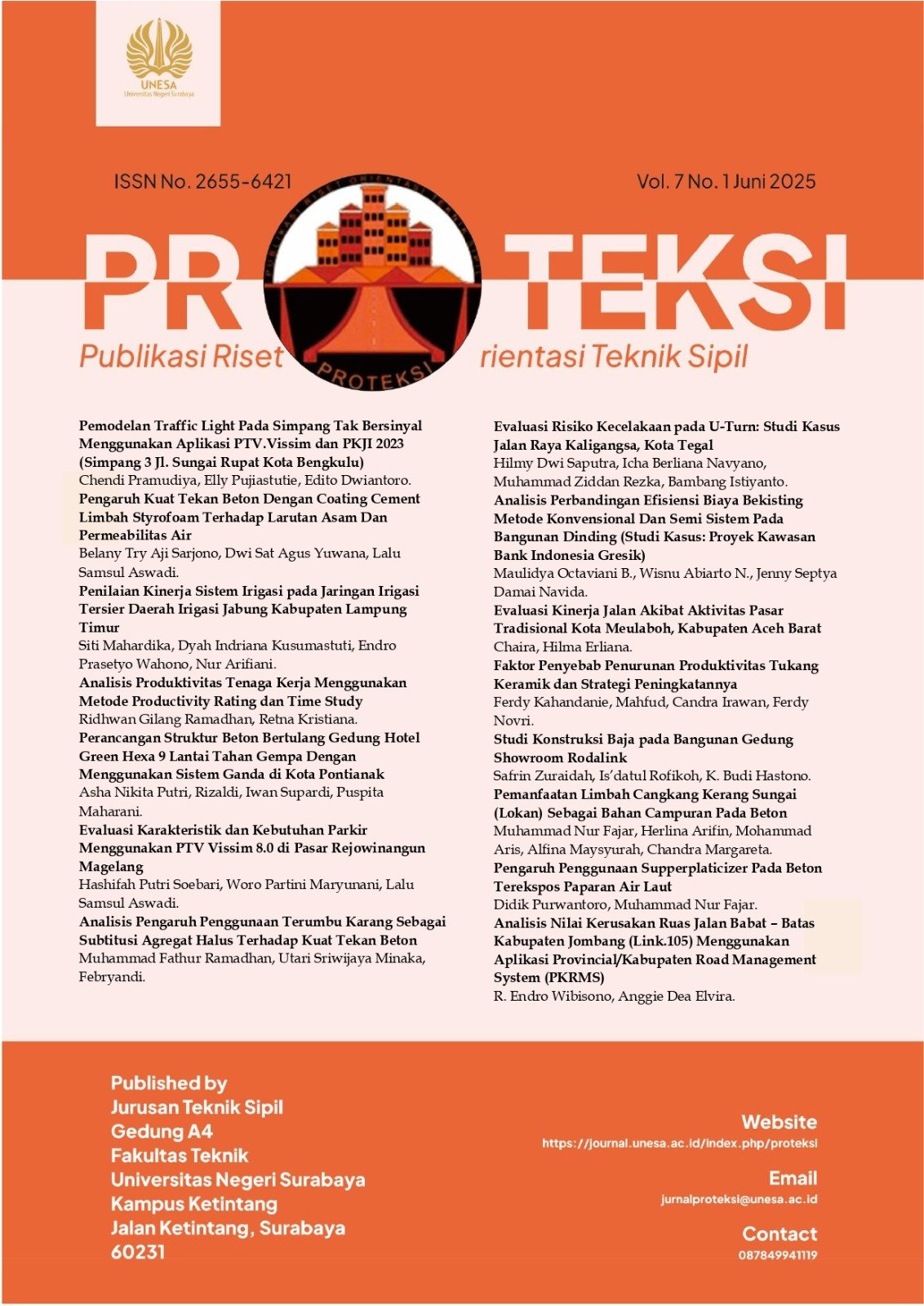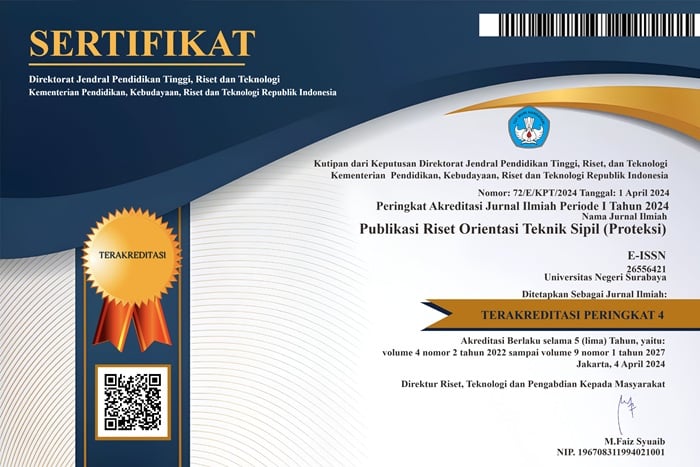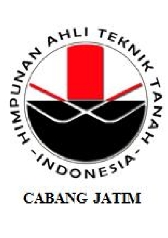Effect of Using Superplasticizer on Concrete Exposed to Sea Water
Pengaruh Penggunaan Supperplaticizer Pada Beton Terekspos Paparan Air Laut
DOI:
https://doi.org/10.26740/proteksi.v7n1.p100-105Keywords:
Compressive strength, Sea Water, SupperplaticizerAbstract
Development in coastal areas has a problem, namely concrete construction will come into direct contact with seawater. Seawater is one of the causes of failure in building structures. Innovations in the field of concrete material technology, one of which is to improve the properties of concrete, including the addition of certain materials, namely admixtures or additives to the concrete mixture, one of which is supperplaticizer. In this study, the compressive strength value of concrete immersed in 3 curing media will be compared, namely normal water, seawater in laboratory conditions and seawater directly. Based on the results of compressive strength, it shows that concrete that is directly exposed to seawater will experience a decrease in compressive strength. And after added the concrete supperplaticizer experiences an increase in the compressive strength value, this is in accordance with the supperplacizier properties which accelerate the hardening of the concrete and increase the sealability or density of the concrete. However, at compositions above 1% concrete, the compressive strength value has decreased.
References
Andina Prima Putri, & Ade Khairani Tobing. (2018). Analisis Kuat Tekan Beton Menggunakan Subtitusi Bahan Ramah Lingkungan. Jurnal Kajian Teknik Sipil, 3(2), 105–109.
Arifin, H., Fajar, M. N., Purwantoro, D. S., Maysyurah, A., & Aris, M. (2024). Pengaruh Penambahan Superplasticizer Terhadap Kuat Tekan Pada Beton Campuran Air Laut. Publikasi Riset Orientasi Teknik Sipil (Proteksi), 6(1), 89–93. https://doi.org/10.26740/proteksi.v6n1.p89-93
Dzikri, M., & Firmansyah, M. (n.d.). Pengaruh Penambahan Superplasticizer Pada Beton Dengan Limbah Tembaga (Copper Slag) Terhadap Kuat Tekan Beton Sesuai Umurnya.
Fajar, M. N., Parung, H., & Amiruddin, A. A. (2023). Perilaku Lekatan Tulangan Bambu Takikan Terhadap Beton Normal Dan Beton SCC. Konstruksia, 14(2), 1. https://doi.org/10.24853/jk.14.2.1-8
Jannah, M., Sariman, S., & Hijriah, H. (2023). Analisis Penggunaan Limbah Karbit Sebagai Agregat Halus Dan Silicafume Sebagai Subtitusi Semen Terhadap Kuat Tekan Dan Kuat Tarik Belah Beton. Jurnal Penelitian Teknik Sipil Konsolidasi, 1(2), 94–102. https://doi.org/10.56326/jptsk.v1i2.1608
Khirunnisa, S., Ghulam Rifqi, M., & Shofi’ul Amin, D. M. (n.d.). Kajian Kuat Tekan Beton Di Lingkungan Laut Tropis Banyuwangi.
Pujianto, A., Prayuda, H., Zega, B. C., & Afriandini, B. (2019). Kuat Tekan Beton dan Nilai Penyerapan dengan Variasi Perawatan Perendaman Air Laut dan Air Sungai. Semesta Teknika, 22(2). https://doi.org/10.18196/st.222243
Nasional, B. S. (1990). Metode Pengujian Tentang Analisis Saringan Agregat Halus dan Kasar. Sni 03-1968-1990, 1–5.
SNI 03-2834-2000 Tata cara pembuatan rencana campuran beton normal
SNI 03-2495. (1991). Spesifikasi Bahan Tambahan Untuk Beton. Yayasan LPMB, Bandung, 1–11.
SNI 1973-2008. (2008). Cara Uji Berat Isi Volume Produksi Campuran Dan Kadar Udara Beton. Badan Standardisasi Nasional Indonesia, 1–13.
Zulkarnain, F., & Kamil, B. (n.d.). Perbandingan Kuat Tekan Beton Menggunakan Pasir Sungai sebagai Agregat Halus Dengan Variasi Bahan Tambah Sica Fume Pada Perendaman Air Laut. http://jurnal.umj.ac.id/index.php/semnaslit
Zulkarnain, F., & Permata Sari, I. (2024). Pengaruh Abu Sabut Kelapa Sebagai Alternatif Mengganti Sebagian Semen Dengan Memakai Bahan Tambah Sika Viscocrate 8670 Mn Terhadap Kuat Tarik Belah Beton. JURNAL TEKNIK SIPIL.: RANCANG BANGUN, 10(02), 109–114. https://doi.org/10.33506/rb.v10i2.3661
Downloads
Published
Issue
Section
License
Copyright (c) 2025 Didik Setyo Purwantoro, Muhammad Nur Fajar

This work is licensed under a Creative Commons Attribution-NonCommercial 4.0 International License.
 Abstract views: 166
,
Abstract views: 166
, PDF Downloads: 76
PDF Downloads: 76










